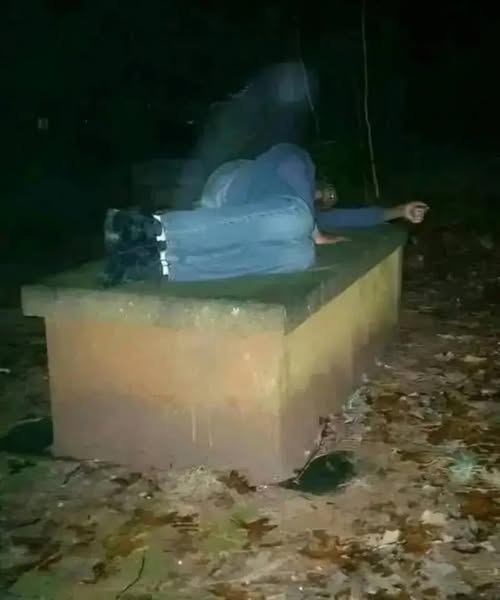
In the whirlwind of modern life, where the pace of our days seems to accelerate with each passing moment, there is something subtle yet profound that is quietly slipping away: the emotional bond we share with our elders. While technology, social media, and the rapid evolution of society have brought countless conveniences and opportunities, they have also created a distance between generations that is often overlooked. Amid this rush, the older members of our communities frequently find themselves on the periphery of daily life, their voices quiet, their presence unnoticed, and their stories untold.
This past week, a video captured the attention of millions across social media platforms, resonating deeply for a reason that transcends the superficial trends of the internet. Unlike flashy clips designed purely for entertainment, this video struck a chord because it reminded viewers of a truth many of us conveniently forget: our elders, once full of life, experience moments of profound solitude, often unseen by those around them.
The video, concise yet powerful, spans barely five minutes. Its opening scene presents an elderly man sitting quietly on a park bench. Life around him is in full motion. Young joggers sprint past, immersed in their routines; people scroll endlessly through their smartphones, eyes glued to screens rather than the world around them; children laugh and play in energetic clusters, oblivious to the solitary figure in their midst. The background is filled with soft, evocative music that underscores the scene, accompanied by a gentle voiceover that speaks directly to the heart: “We were all children once. We were all young once. But not all of us will have someone to remember us when we grow old.”
The narrative of the video continues with a tender exploration of the man’s life. Through a sequence of visuals, the story unfolds—old photographs, treasured memories, fleeting moments with family, and snapshots of his youth. Each scene is carefully framed to evoke nostalgia, allowing the viewer to see not just a man, but a life rich with experiences, laughter, and love. Yet, as the timeline moves forward to the present, there is a stark contrast. The vibrancy of his earlier years fades into the quiet, almost invisible existence he now leads. The imagery speaks volumes without uttering a single word, conveying a loneliness that is both palpable and deeply affecting.
What makes this video particularly moving is its universality. The man on the bench could be anyone’s father, grandfather, uncle, or neighbor. The emotions it evokes—loneliness, reflection, and the desire for connection—are feelings that transcend cultural, social, and generational boundaries. The closing frame delivers a simple yet profoundly resonant message: it is not the accumulation of years alone that matters, but the relationships and memories we cultivate along the way.
Expanding on this theme, the video serves as a reminder that, in our pursuit of progress and efficiency, we often overlook the human need for connection. Older individuals, who once played active roles in our families and communities, may find themselves isolated as society speeds forward. While they have witnessed decades of change, from technological revolutions to social transformations, the most enduring impact often comes from personal relationships—those moments of shared laughter, attentive listening, and simple acts of presence.
Indeed, research consistently highlights the importance of social engagement for older adults. Studies show that loneliness can have profound effects on both physical and mental health, increasing the risk of depression, cognitive decline, and even chronic illnesses. The simple act of spending time with elders—listening to their stories, sharing meals, or merely offering a friendly smile—can provide emotional sustenance that is invaluable. Yet, as the video illustrates, such gestures are increasingly rare in a society preoccupied with speed and novelty.
Moreover, the emotional resonance of the video stems not only from the depiction of solitude but also from the recognition of our shared humanity. We all age, we all accumulate memories, and we all desire to be seen and remembered. The narrative implicitly asks viewers to reflect on their own lives and relationships: Are we taking the time to acknowledge the presence of those who came before us? Are we investing in the emotional well-being of our elders, or are we too absorbed in the momentum of our own routines?
By capturing these reflections, the video does more than tell a story—it inspires action. Many viewers reported feeling a renewed motivation to reach out to older family members, neighbors, or friends, realizing that small gestures of attention can have profound impacts. A phone call, a shared walk, or even a brief conversation can bridge the emotional gap that often grows unnoticed over time.
Furthermore, the video’s subtle storytelling demonstrates the power of non-verbal communication. The absence of dialogue in key scenes allows the audience to project their own experiences and emotions onto the narrative. The elderly man’s expressions, the quiet tension of an empty park bench, the juxtaposition of vibrant youth against solitary age—all work together to evoke empathy. This approach illustrates a broader principle: storytelling that relies on visual and emotional cues can resonate far more deeply than words alone, particularly when addressing universal human experiences like aging, memory, and connection.
Importantly, this narrative is not meant to instill guilt but rather to encourage mindfulness. In a culture that prizes productivity and constant engagement, pausing to recognize the presence of older individuals can become a meaningful practice. Simple awareness, empathy, and intention can counteract the isolation many elders feel, creating moments of genuine connection that enrich both lives.
The video also highlights the cyclical nature of life. By reminding us that “we were all children,” it draws attention to the inevitable passage of time. Childhood eventually gives way to adulthood, and adulthood to old age. Yet, the bonds we form, the attention we give, and the love we share can endure beyond mere years. It is this continuity of human connection, preserved through memory and care, that defines a life well-lived.
Ultimately, the video is a call to action in its most subtle and humane form. It asks viewers to pause, reflect, and engage with the older individuals in their lives. In doing so, it challenges us to rethink our definitions of value, success, and fulfillment. Life’s richness is not measured solely by achievements or milestones but by the depth of relationships and the strength of empathy.
The final message, appearing on the screen after the video concludes, is simple yet profound: “Remember those who remember you.” It serves as both a reflection and a gentle reminder that our attention, presence, and care are gifts that transcend generations. By acknowledging the elders around us, by honoring their stories, and by including them in the fabric of our daily lives, we preserve not only their dignity but also the shared humanity that binds us all.
In a society increasingly dominated by digital interfaces and fleeting interactions, such reminders are invaluable. They urge us to reclaim a space for genuine emotional connection, to restore the delicate balance between progress and presence. By embracing these lessons, we can ensure that our elders are not invisible, that their voices continue to echo in our memories, and that their experiences remain an integral part of our collective story.
The viral nature of this video underscores a broader truth: people are deeply moved by content that reflects the human condition honestly and compassionately. Stories of solitude, reflection, and intergenerational connection resonate universally because they mirror our own fears, hopes, and experiences. As viewers engage with such content, it not only sparks emotional reflection but also encourages tangible actions—reaching out, connecting, and nurturing relationships that might otherwise be neglected.
In conclusion, the five-minute video is more than just a brief online sensation; it is a poignant reminder of the enduring importance of emotional connection across generations. It captures the essence of what it means to age, to remember, and to be remembered. As society continues to evolve at an unprecedented pace, pausing to honor our elders—through time, attention, and empathy—remains an essential practice. In doing so, we not only enrich their lives but also deepen our own, forging bonds that persist beyond the limitations of time and circumstance.



